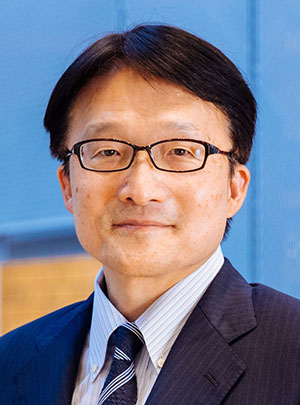With research that led to the discovery of pathophysiological mechanisms underlying different types of CVD, including heart failure (HF), Professor Issei Komuro (The University of Tokyo Graduate School of Medicine - Tokyo, Japan) holds true to his department’s slogan to “Be the last bastion for cardiovascular disease patients!”
What inspired you to specialise in cardiology?
During my residency, I felt that of all the different therapeutic fields, cardiology had the most advanced diagnostic and therapeutic techniques. It was wonderful to see that with proper diagnosis and treatment, even patients with severe CVD could be cured and discharged home from hospital.
What are your main career achievements to date?
I am particularly proud of several achievements. As a graduate student, I became interested in the molecular mechanisms of haemodynamic overload-induced cardiac hypertrophy. In an effort to understand and describe the mechanisms, I built a stretching device with elastic silicone and stretched cultured cardiomyocytes in a petri dish. Using this system, I discovered that mechanical stretch activates various intracellular signals, such as protein kinase C and mitogen-activated protein kinase, resulting in cardiomyocyte hypertrophy.1 To understand the molecular mechanisms of HF, I needed to know more about the physiology of the heart. So I decided to study cardiac development at Harvard Medical School in Boston, USA. First, I tried to isolate a homologue of MyoD – a master transcription factor that can differentiate many types of cells into skeletal muscle – in the heart. When that failed, I changed my target to homeobox genes and isolated NKX2-5, a gene responsible for many congenital heart diseases.2 Finally, we began to apply our findings to elucidate the mechanisms of HF and, using genetically engineered mice, have reported on many mechanisms.
I also established the Subcommittee on Basic Cardiovascular Research in the Japanese Circulation Society (JCS), to encourage basic research in Japan, and founded the Japanese Onco-Cardiology Society and the Japanese Circulation Association. As President of the JCS, I was instrumental in the enactment of the Stroke and Cardiovascular Disease Control Act, which was passed by Japan’s National Diet in December 2018.
What are you working on at the moment?
With rising patient numbers, I continue to try to elucidate the molecular mechanisms of HF and establish new therapeutic strategies. Since genetic recombination technology is not available for humans, I am using two approaches: genomic analysis, which suggests many candidate genes, and single-cell transcriptome/epigenome analysis, which tells us the significance of these genes in HF development. In addition, wearable and non-wearable devices allow us to obtain more information in our daily lives. Integrating the vast amount of clinical and genomic information will enable patient stratification and precision medicine.
What advice would you give to young researchers?
With so many different types of CVD and a whole host of diagnostic and therapeutic techniques, cardiology is a fascinating and incredibly complex field. Advances in computer technology and artificial intelligence will make it possible to analyse and integrate vast amounts of clinical and genomic information, which is an exciting prospect that will further help to elucidate the intricate mechanisms of CVD – so have fun and enjoy the challenges!


 Our mission: To reduce the burden of cardiovascular disease.
Our mission: To reduce the burden of cardiovascular disease.